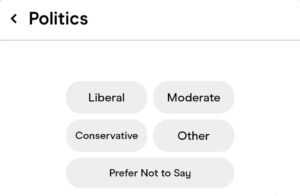Originally, 400,000 homeowners were eligible for assistance under the FHA (Federal Housing Administration) Secure plan. So far, 150,000 families have applied and received help, putting $28.5 billion back into the housing market through FHA Secure loans.
The downside to the program, some say, is that borrowers who apply must have strong credit histories, not miss a payment in the 12 months before their mortgages reset and must be about to go into default, according to FHA guidelines.
“This is the reason I think it doesn’t fit for 99 percent of the people,” Dennis Hardy, a loan officer at Ameristar Mortgage Corp. in Madison, Wis.
Since the plan’s inception, Hardy said he has had one borrower in the last six months who would qualify for the program. He said most borrowers he works with have already missed a payment or were struggling to meet current payments after their loan adjusted while looking for refinancing.
Also, borrowers who miss payments in the last 12 months cannot qualify for other forms of FHA loans, said Hardy.
“Somebody needs to loosen something up,” said Hardy, “in order to get these people out of these sub-prime loans completely.”
Separately in the U.S. House, Democrats have proposed their own solutions for the nation’s housing crisis.
The House Committee on Financial Services held a hearing on April 9 to consider a bill sponsored by Chairman Barney Frank (D-Mass) that would allow the FHA to provide up to $300 billion to assist afflicted homeowners in securing new loans.
However, many committee members questioned the impact of refinancing troubled loans on taxpayers and whether the FHA has the ability to negotiate with mortgage lenders.
Rep. Judy Biggert (R-IL) questioned Randall Kroszner, board member of the Federal Reserve System, and Brian Montgomery, an assistant secretary for the Department of Housing and Urban Development (HUD), as to why flexible guidelines are necessary without impacting taxpayers or affecting the program.
Kroszner compared troubled borrowers to at-risk drivers, saying those at high risk would need to pay higher premiums to insure the loans.
“If the FHA is going to be a world-class insurer,” said Kroszner, “it needs to have that flexibility to charge a higher price when there are more risks.”
Montgomery said flexible would be “key” for the program moving forward as it takes on more risks. He said the greatest amount of borrowers at FHA have high credit scores yet are in a lower income bracket and flexibility in the program would benefit them.
However, they would have to put down a larger payment when refinancing, Montgomery said.
The proposal also would require mortgage lenders and servicers to take smaller fees from the proceeds of a loan, something many are not willing to do.
“The more incentives given to servicers to use FHA loans the more they would be willing to incur the costs of refinancing borrowers, ” said Krosznor in his testimony before the committee.
Incentives or not, once a borrower has made a late payment, lenders see a borrower as a high risk, said Eric Norville, a FHA Secure loan officer at Advantage Plus Financial in Aurora, Ill.
Norville said he has not encountered any lenders or banks that are willing to fund a FHA Secure loan because of its high risk.
The U.S. Senate recently passed a bill that will offer tax breaks to those who purchase homes in or about to go into foreclosure.
Categories:
At Home Money Matters Nationwide Public
Tags:
foreclosure






Be First to Comment